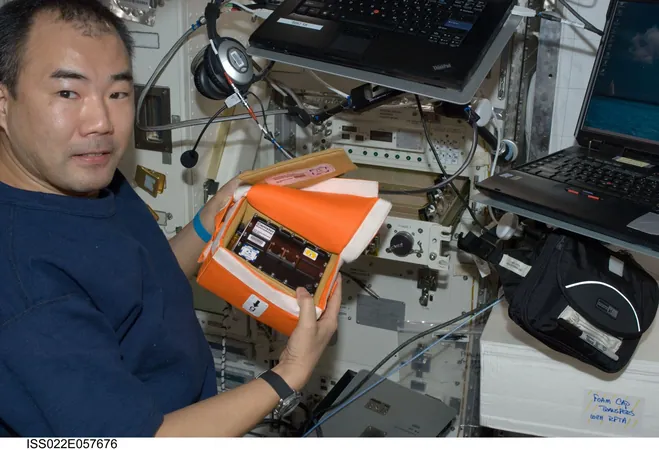
Major Breakthroughs from Space Station Research: Cancer Drug Developments, Eco-Friendly Satellites, and New Insights on Glass Formation!
2024-11-25
Author: Emily
Recent research conducted aboard the International Space Station (ISS) has produced some groundbreaking findings that could revolutionize medicine, satellite technology, and material science.
Space-Grown Crystals Could Pave the Way for Targeted Cancer Treatments
In an exciting development, scientists have utilized protein crystals grown in the unique environment of microgravity to unveil the structure of a helix-loop-helix (HLH) peptide. This peptide forms a complex with vascular endothelial growth factor-A (VEGF), a key player in the formation of new blood vessels. Excessive VEGF activity is often linked to tumor growth, making it a prime target for cancer therapies. The implication here is significant: HLH peptides could potentially be harnessed to develop innovative drugs aimed at inhibiting VEGF and, thereby, curtailing tumor development.
The Japan Aerospace Exploration Agency (JAXA) led this investigation, aptly named JAXA PCG, demonstrating the advantages of microgravity in advancing crystal growth technology. By conducting these experiments aboard the ISS, researchers were able to produce high-quality crystals that are essential for elucidating complex molecular structures, which are critical in drug design and biomedical research.
Revolutionizing Satellite Sustainability with Wood
In a surprising twist, recent experiments have revealed that wood can be a viable and sustainable option for satellite construction. After being exposed to the harsh conditions of space for about 10 months, various wood samples showed remarkable resilience—maintaining their weight and exhibiting no signs of erosion due to atomic oxygen exposure.
Given that traditional metal satellites can contribute to atmospheric pollution upon reentry—releasing harmful particles and aerosols that endanger the ozone layer—wood offers a much more environmentally friendly alternative. During the reentry process, wood simply biodegrades into water and carbon dioxide, thus minimizing ecological impact. JAXA's study, dubbed "Exposure of Wood to Outer Space," focused on how the mechanics of wood hold up against the rigors of space, including atomic oxygen, cosmic rays, and solar energy.
New Insights into Glass Formation from Magnesium Silicates
The research doesn't stop there! Scientists have also made headway in understanding the behavior of magnesium silicates, which are critical to both glass science and geoscience. New findings suggest that the atomic structure, rather than electronic properties, significantly influences the ability of these materials to form glass. This is a pivotal insight for material scientists looking to design new types of glass.
JAXA’s study, known as "Fragility," employed the ISS's Electrostatic Levitation Furnace (ELF) to assess the thermophysical properties of oxidized molten metals. This innovative apparatus allows for the observation of material behavior in a container-free environment, contributing greatly to our understanding of glass formation and opening doors to developing novel materials that could have applications far beyond our current paradigm.









 Brasil (PT)
Brasil (PT)
 Canada (EN)
Canada (EN)
 Chile (ES)
Chile (ES)
 España (ES)
España (ES)
 France (FR)
France (FR)
 Hong Kong (EN)
Hong Kong (EN)
 Italia (IT)
Italia (IT)
 日本 (JA)
日本 (JA)
 Magyarország (HU)
Magyarország (HU)
 Norge (NO)
Norge (NO)
 Polska (PL)
Polska (PL)
 Schweiz (DE)
Schweiz (DE)
 Singapore (EN)
Singapore (EN)
 Sverige (SV)
Sverige (SV)
 Suomi (FI)
Suomi (FI)
 Türkiye (TR)
Türkiye (TR)